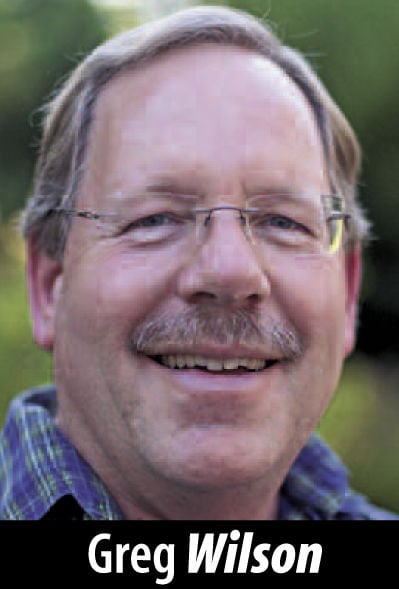As we are all well aware, even with the news of eye-popping salaries for some jobs at many of our area’s high-tech companies, housing in San Mateo County remains difficult to afford, if not completely unaffordable, for a great many county residents.
The increasing disparity between our local housing costs and what the average household earns is a tough problem to solve, one that seems without any ideal solutions. Multifamily housing developments can help somewhat: the high cost of land can be divided between more homes reduce material and labor costs. Thus, the many larger housing projects (and the small multifamily projects replacing some single-family homes) popping up these days. But although such developments help, most folks working at jobs that pay at or near minimum wage still find it difficult, if not impossible, to afford not only these, but even our area’s older, somewhat less desirable, buildings. Thus, the need for so-called “affordable housing.”
This week I walked through North Fair Oaks to check on the progress of two large affordable housing projects currently underway in that community. One, Middlefield Junction, made big local headlines back in June of 2024 when one of the two buildings then well under construction caught fire and burned pretty much to the ground. While the fire proved to be a significant setback, after the investigation — which proved to be inconclusive — work quickly got underway to clear the debris and start anew framing up the five stories of apartments atop the ground floor concrete podium (that podium, which will contain the building’s lobby, various community-serving offices and some amount of internal parking, mostly survived the fire). The fire ultimately set back progress on the larger of the development’s two buildings by about a year.
Although work continues on both, to my eye the somewhat smaller Middlefield Junction building seems essentially complete. Given the number of vehicles parked in front of it, it is or soon will be occupied (Mercy Housing, the organization that helped develop and will be managing this new project, lists this building as opening in “late summer/early fall 2025” on its website). While there I was able to walk completely around the building and even peek into some of its windows. Lights were on in the lobby, but other ground floor spaces — one being a community room, I believe — do not have their interiors completely finished. As well, although the landscaping and benches around the building’s exterior appear to be in the final stages of completion, the fenced yard area for the building’s residents is completely undeveloped at this point.
As for the fire-damaged building, construction fencing prevented me from getting a close look at anything other than the building’s front and southeast side but there no evidence that a fire ever occurred and that building looks nearly complete as well, at least when viewed from the outside. There is undoubtedly still plenty to do inside, but the exterior has been painted and most of the scaffolding surrounding the building has been removed. This second building should be completed sometime next year. Together with its sister building, it will bring to the community 179 affordable apartments, a child care center and a public community space.
Just a few blocks away, along MacArthur Avenue between San Mateo and Douglas avenues, a large parcel that formerly housed a towing company office and vehicle storage yard has been cleared and leveled, ready to accept the foundation for “Monarch at Redwood.” This is to be a six-story multifamily residential building containing 86 units of permanent supportive housing. Its ground floor will contain an internal parking garage, the building’s lobby, a community room and four residences each with exterior entries and individual patios. Nestled between the U-shaped building’s two wings will be a second-floor south-facing landscaped courtyard for the all those living in the building.
Of Monarch at Redwood’s 86 apartments, 28 studios are to be set aside for unhoused families with significant healthcare needs, 11 apartments will be for homeless individuals with behavioral health challenges, and 46 will be deed restricted for households earning less than 60% of the area’s median income (one market-rate apartment will be for the property manager). All of the building’s residents will have access to job training, career development and health and wellness programs.
Ideally, our area would have a variety of unsubsidized housing types at all affordability levels in sufficient quantities to provide comfortable homes for nearly everyone. But we don’t live in an ideal world; our prevailing wages are well out of balance with our market-rate housing costs. Projects like the ones I visited fill a significant gap in our housing stock, and hopefully for many, will help them to improve their financial position to where they can move on to other, unsubsidized housing.
Greg Wilson is the creator of Walking Redwood City, a blog inspired by his walks throughout Redwood City and adjacent communities. He can be reached at greg@walkingRedwoodCity.com. Follow Greg on Twitter @walkingRWC.






















(0) comments
Welcome to the discussion.
Log In
Keep the discussion civilized. Absolutely NO personal attacks or insults directed toward writers, nor others who make comments.
Keep it clean. Please avoid obscene, vulgar, lewd, racist or sexually-oriented language.
Don't threaten. Threats of harming another person will not be tolerated.
Be truthful. Don't knowingly lie about anyone or anything.
Be proactive. Use the 'Report' link on each comment to let us know of abusive posts.
PLEASE TURN OFF YOUR CAPS LOCK.
Anyone violating these rules will be issued a warning. After the warning, comment privileges can be revoked.